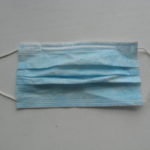
Surgical masks have been used as part of personal protective equipment (PPE) in dental practice for many years. Since the outbreak of acute respiratory syndrome coronavirus 2 (SARS-CoV-2), facemasks have also been considered vitally important to reduce infection risk. N95 (FFP2) respirators must fit tightly to the face and can prevent small airborne particles. While surgical masks cannot prevent inhalation of small airborne particles, both of them can protect users from large droplets and sprays. Previous reviews found insufficient evidence to assess effectiveness but additional trials are now available.
The aim of this review was to compare the effectiveness of N95 respirators versus surgical masks for prevention of influenza.
Methods
Searches were conducted in the PubMed, EMBASE, and The Cochrane Library databases from inception to January 27, 2020. Initially systematic reviews evaluating studies evaluating use of mask to prevent influenza were identified. From these reviews randomised controlled trials (RCTs) were identified. A second search was conducted to specifically identify RCTs published between 27, 2015, to January 27, 2020 from the same databases. ClinicalTrials.gov was searched for unpublished data.
Two reviewers independently screened, selected and abstracted data from the studies. Risk of bias was assessed using the Cochrane Risk of Bias domains-based tool. The primary outcome was laboratory-confirmed influenza; with laboratory-confirmed respiratory viral infections, laboratory-confirmed bacterial colonization, laboratory-confirmed respiratory infection, and influenza like illness as secondary outcomes. Meta-analyses were conducted to calculate pooled estimates by using RevMan 5.3 software.
Results
- 6 RCTs involving a total of 9171 participants were included.
- Studies were published between 2009 and 2019 in America, Australia, Canada, China.
- Sample sizes ranged from 435 to 5180 participants.
- 2 studies were considered to be at high risk of bias the remainder at unclear risk.
- Fixed effect meta-analysis
- (5 RCTs, 8444 participants) found no statistically significant differences in preventing influenza using N95 respirators and surgical masks Relative Risk (RR) = 1.09 (95%CI; 0.92 – 1.28 P > .05).
- 4 RCTs, 3264 participants revealed no statistically significant differences in preventing respiratory viral infections using N95 respirators and surgical masks; RR = 0.89 (95%CI; 0.70-1.11, P > .05).
- 2 RCTs,2538 participants showed that compared with surgical masks, N95 respirators significantly reduced bacterial colonization in hospitals; RR = 0.58 (95%CI; 0.43 – 0.78, P < .05).
Conclusions
The authors concluded: –
the current meta-analysis shows the use of N95 respirators compared with surgical masks is not associated with a lower risk of laboratory-confirmed influenza. It suggests that N95 respirators should not be recommended for the general public and non-high-risk medical staffs those are not in close contact with influenza patients or suspected patients.
Comments
This systematic review has followed a good methodological approach identifying 6 RCTs. None of the trial were of low quality as allocation concealment was not mentioned and blinding of participants to mask type is impractical. The findings show no statistical differences in the efficacy of standard and N95 masks in preventing laboratory-confirmed, influenza, respiratory viral infections, respiratory infection and influenza-like illness. Although respirators appear to protect against bacterial colonization.
Trish Greenhalgh et al very recently looked at the question of; ‘What is the efficacy of standard face masks compared to respirator masks in preventing COVID-type respiratory illnesses in primary care staff? ‘ as part of the Oxford COVID-19 Evidence Service concluding: –
Systematic review evidence provides cautious support for the use of standard surgical masks in non-aerosol-generating procedures (AGPs), though the empirical studies underpinning this conclusion were not in a COVID-19 population, and only one was in a community setting. It is clear from the literature that masks are only one component of a complex intervention which must also include eye protection, gowns, behavioural measures to support proper doffing and donning, and general infection control measures.
Related to this Public Health England has produced guidance on when to use the different kinds of mask.
Links
Primary Paper
Long Y, Hu T, Liu L, et al. Effectiveness of N95 respirators versus surgical masks against influenza: A systematic review and meta-analysis [published online ahead of print, 2020 Mar 13]. J Evid Based Med. 2020;10.1111/jebm.12381. doi:10.1111/jebm.12381
Other references
PHE – When to use a surgical mask of FFP3 respirator
Picture Credits
“File:A surgical mask (2017).jpg” by AlexChirkin is licensed under CC0 1.0
